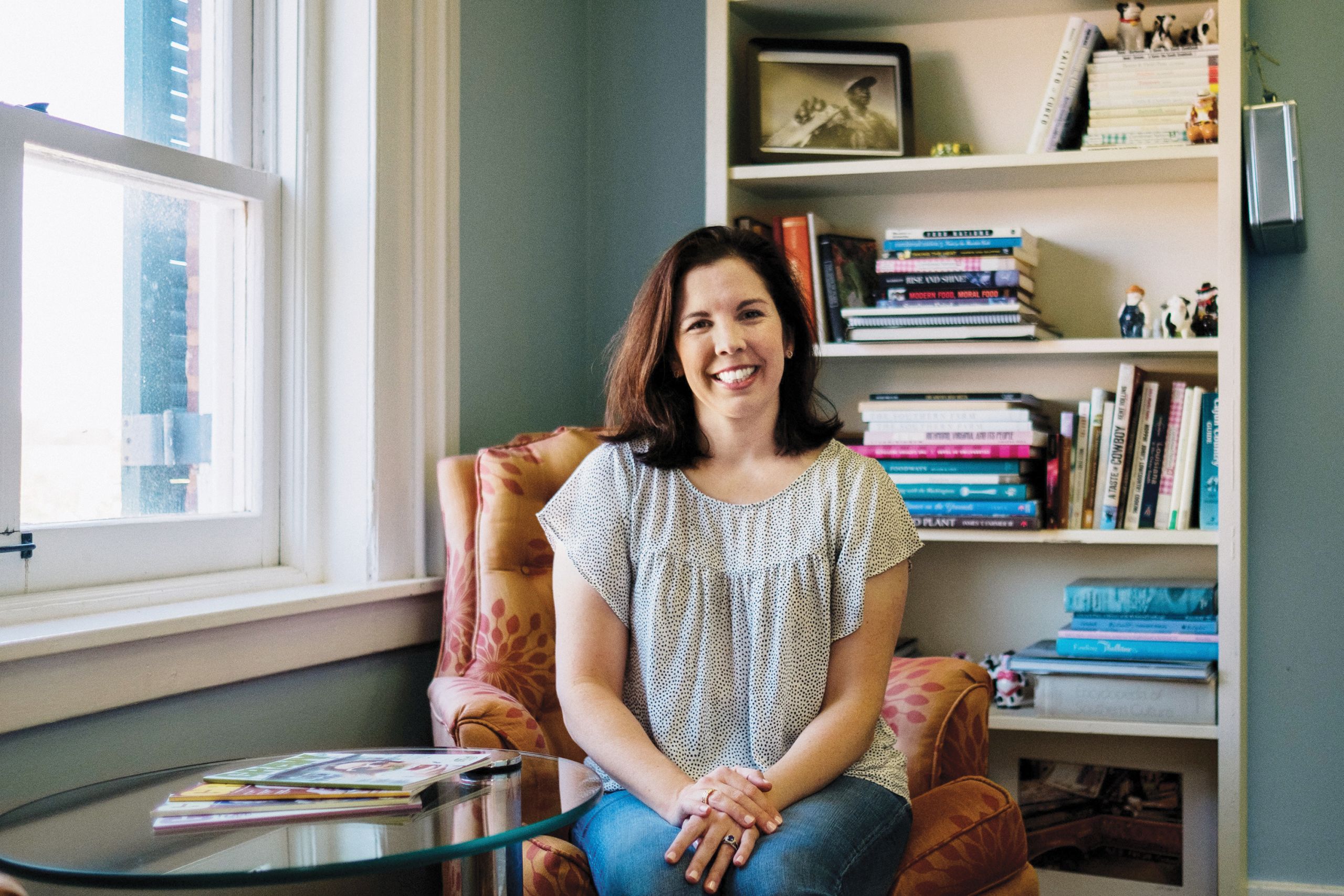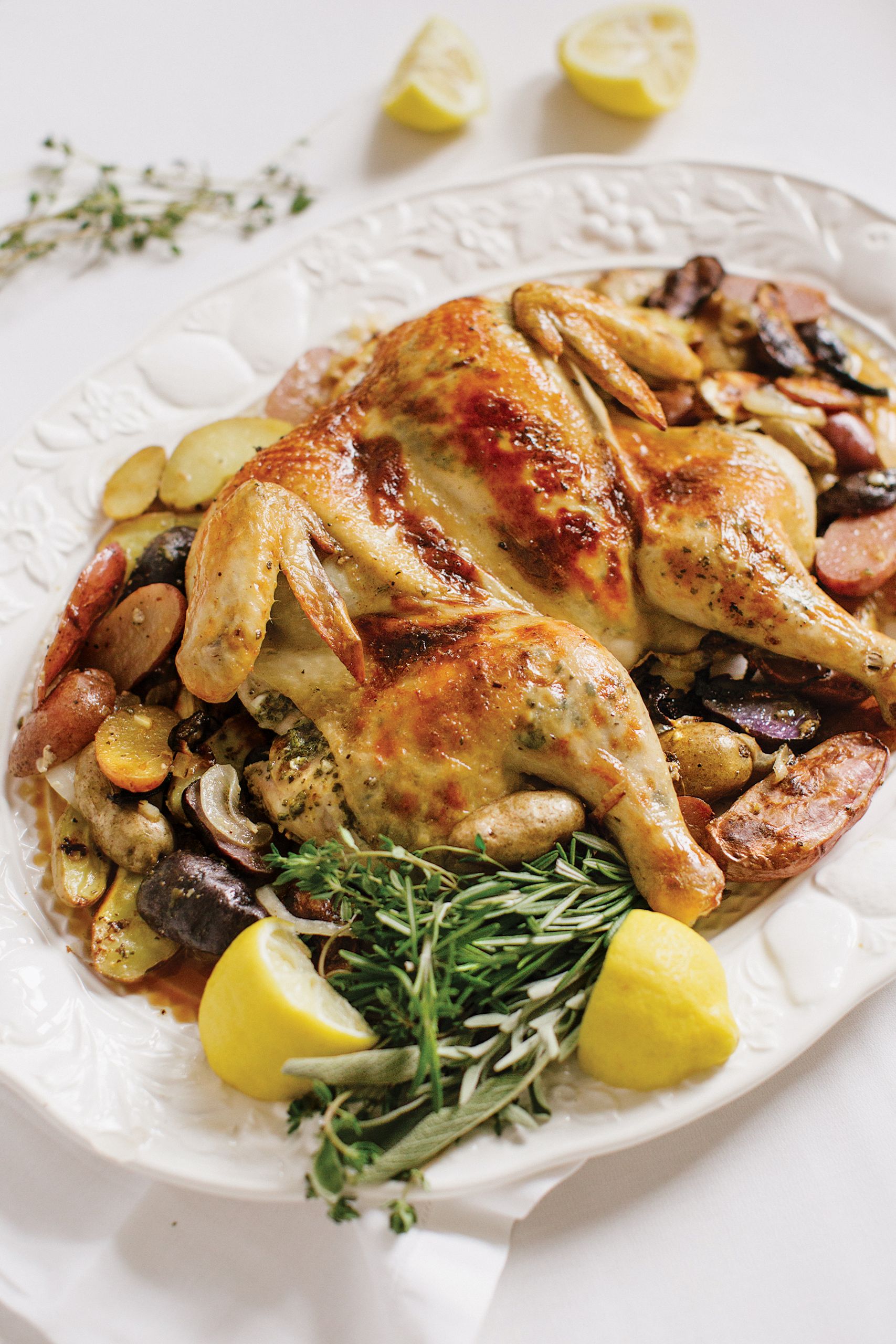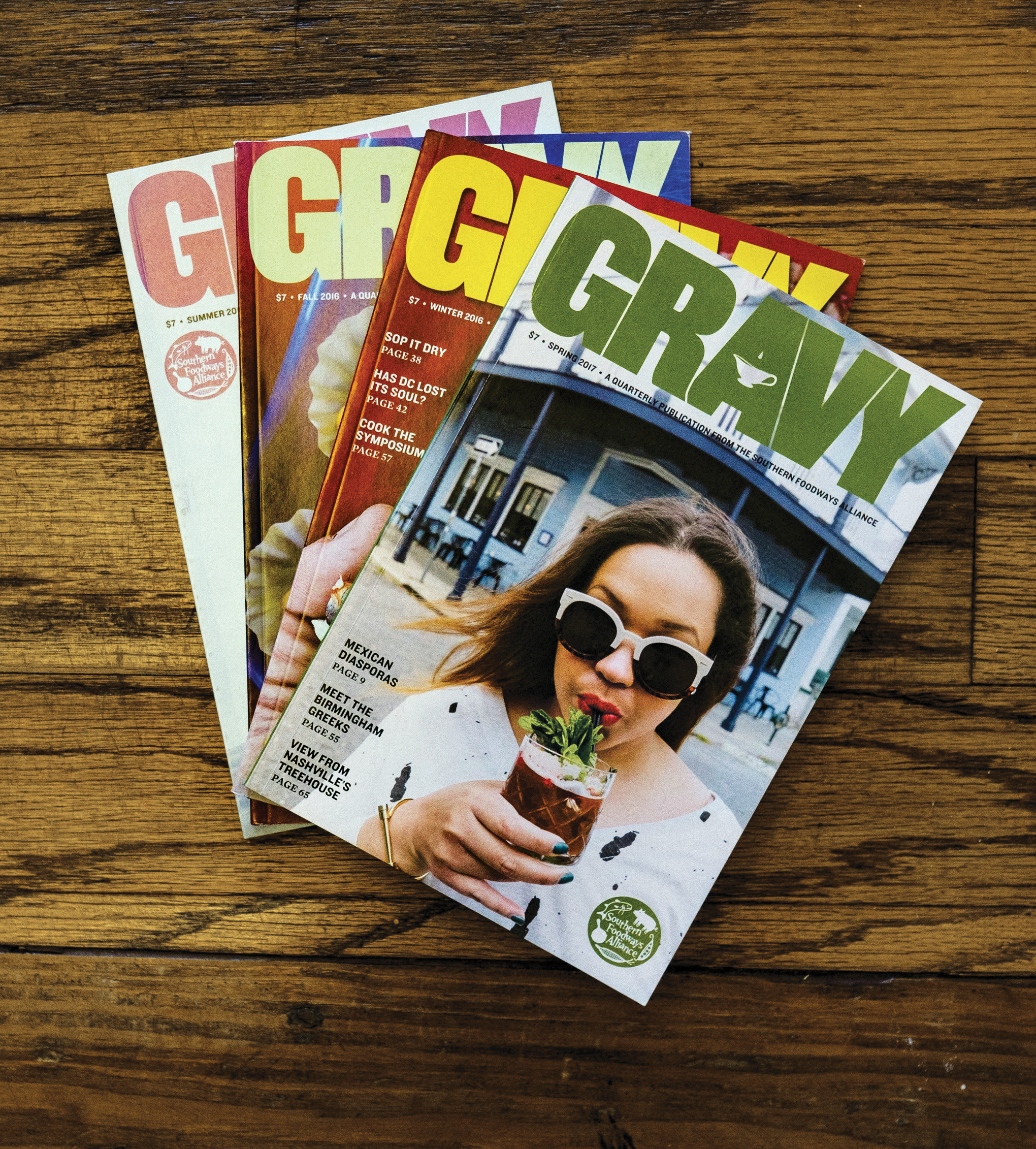Sopping Up the South
Posted on July 7, 2017
Sara Camp Arnold Milan ’12 (MA) (Photo by Danny Klimetz)
Gravy editor focuses on food to tell the region’s stories
Growing up in Raleigh, Sara Camp Arnold Milam ’12 (MA) loved books that took her on a spin around the globe. When she arrived at Princeton University as an undergraduate in 2002, she placed a pin on a map, setting a course in Spanish literature.
She had hoped to similarly inspire middle school students as a teacher. But an appetite for writing and research — and food as a subject for both — set her on a different, if still literary, path and brought her on a round trip back to the South.
Milam landed an internship at the literary magazine Oxford American, a nonprofit quarterly based in Mississippi focusing on the cultural complexities of the South. She asked to work with columnist John T. Edge of the Southern Foodways Alliance, which documents the South’s diverse food cultures. Edge’s gift for noting moments in life as emblems of the evolving South inspired Milam to enroll in UNC’s folklore program.

Spatchcock chicken (Photo by Danny Klimetz)
“I think moving away is part of what gave me a keener appreciation of what a deep and rich well Southern literature and culture really was,” Milam says from her home in Oxford, Miss., where as managing editor she oversees the alliance’s award-winning publication, Gravy. “I saw the potential that storytelling in food has for telling truths about the region.”
Milam was attracted to UNC for the opportunity to work with Bill and Marcie Cohen Ferris, married historians who are, respectively, senior associate director of UNC’s Center for the Study of the American South and co-editor of its Southern Cultures magazine. Marcie Cohen Ferris, a professor in the American studies department, said Milam’s thesis examined storytelling in marketing local farm-raised produce and goods.
“Sara Camp’s deep sensitivity for the value of a story was reflected in this work, including her poignant oral history interviews conducted at the Carrboro Farmers’ Market,” Ferris said. “She is a brilliant editorial voice in what is arguably one of the nation’s most important centers for regional foodways study and documentation.”
Milam volunteered at the alliance throughout her time at Carolina, and Edge hired her in 2012 to work on Gravy. It has grown from a quarterly print journal to a frequently updated, multimedia site, chronicling the changing South through food.
 Three years after Milam took the post, Gravy was named Best Publication by the James Beard Foundation, noting “its journalistic leadership in the community, its progressive approach as a multimedia publication, and its honesty and impact on issues of social and food justice.” In 2016, Beard recognized the Gravy podcast as the year’s best, and Gravy contributor Emily E. Wallace ’10, communictions director at the UNC center, was a finalist in humor writing for “Ham
to Ham Combat.”
Three years after Milam took the post, Gravy was named Best Publication by the James Beard Foundation, noting “its journalistic leadership in the community, its progressive approach as a multimedia publication, and its honesty and impact on issues of social and food justice.” In 2016, Beard recognized the Gravy podcast as the year’s best, and Gravy contributor Emily E. Wallace ’10, communictions director at the UNC center, was a finalist in humor writing for “Ham
to Ham Combat.”
“It’s humbling to see that what we’re doing is having that kind of impact,” Milam says of the Beard recognition.
Milam’s role at the alliance also involves a series of books to be produced by the University of Georgia Press. She co-wrote The Southern Foodways Alliance Guide to Cocktails with Atlanta mixologist Jerry Slater. Scheduled for October release, it is described as a “historically grounded primer for the contemporary drinker.”
Milam is determined to keep Gravy relevant by focusing more on the ways food connects people and places; the winter 2016 issue poked at such topics as dining room politics and racial diversity.
“I try to look for things that are a little different, that maybe have a little more of an edge and aren’t quite so rosy,” she said. “We are especially interested in stories of the present and how they will affect the future. We want to challenge people a little bit by offering stories they won’t find anywhere else.”
— Jill Warren Lucas
Spatchcock Chicken
Sara Camp Arnold Milam shares her husband Kirk’s recipe for this chicken roasted with a lemony-herb compound butter.
1 whole chicken (preferably on the smaller side)
1 stick unsalted butter
2 cloves garlic
1 sprig rosemary
3 or 4 sprigs thyme
1 sprig (4 or 5 leaves) sage
1 lemon
1 tablespoon kosher salt
1 tablespoon freshly ground pepper
1 large yellow onion, sliced
1 to 1½ pounds fingerling potatoes
• Wash the bird and remove the giblets from the cavity. Pat dry with paper towels.
• Using kitchen shears, cut out the spine of the chicken and flatten, breast side up, breaking the wishbone so it lies flat. This is where some cooks flatten the chicken by whacking it with a cast-iron skillet. Go ahead and get your aggression out, but don’t beat the bird.
• Soften the stick of butter by leaving it sitting on the counter, still wrapped, for a couple of hours or, if you don’t have time, microwave it for 5 to 10 seconds at a time until it is soft but not melted.
• Preheat oven to 400 F.
• Mince the garlic and herbs, zest the lemon and add the zest, garlic and herbs to the softened butter along with the salt and pepper. Squeeze the lemon juice over the softened butter mixture and mix with a fork so that you have a soft compound butter.
• Starting at the thick end of the breast, gently separate the skin from the breast by running your finger along the breastbone, making sure not to tear the skin; do the same thing for the thighs up into the legs.
• Using your fingers, place ¼ of the softened butter mixture between the meat and the skin of each breast and thigh/leg.
• Slice the potatoes in half lengthwise and the onion in about ¼-inch slices, separating the rings.
• Cover the bottom of a large cast-iron skillet (or rimmed baking sheet) with onion and potatoes, then add the flattened chicken, skin side up.
• Bake for 45 minutes or until the internal temperature of the thickest part of the breast meat reaches 165 F.
Thanks for reading the Carolina Alumni Review
Carolina Alumni members, sign in to continue reading.
Not yet a member? Become one today.
